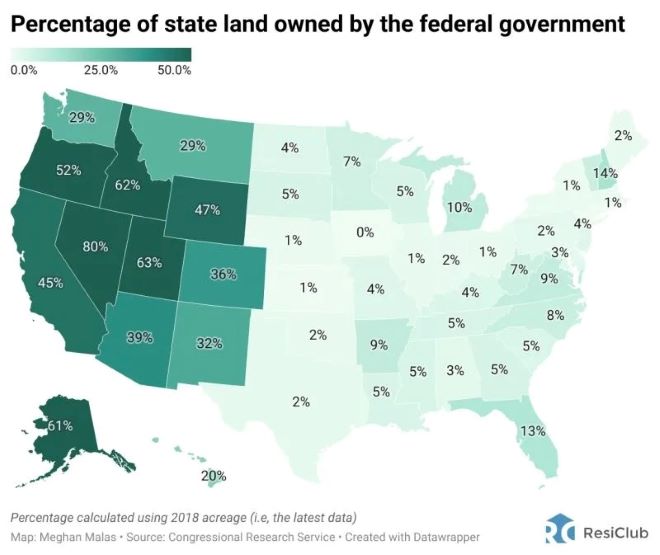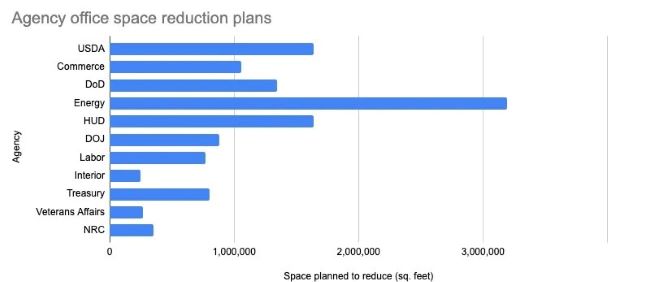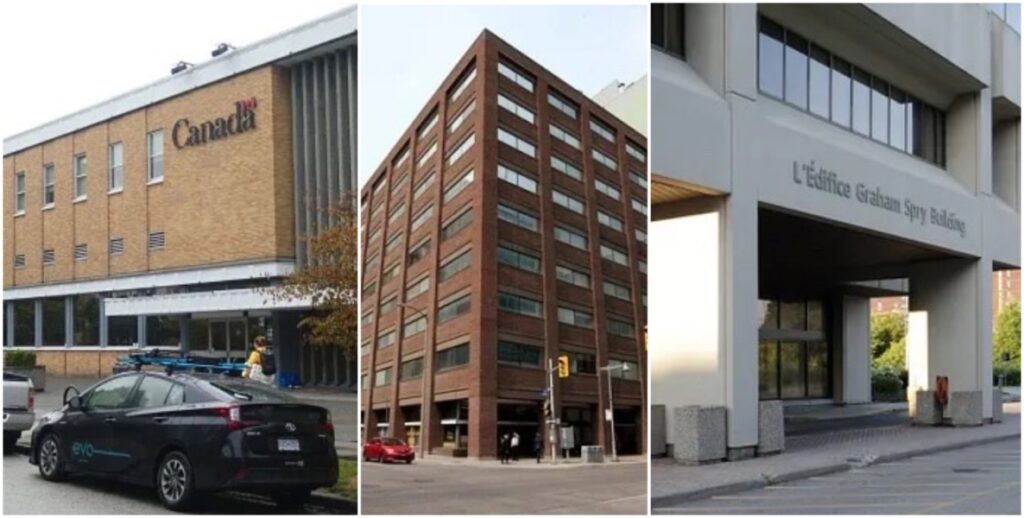Earlier last week, Canada made an exciting announcement: The federal government launched a Canadian Public Land Bank intended to turn publicly-owned property into housing. The initiative has already identified 56 properties in cities from Vancouver to Montreal and many in between, turning vacant and underused assets into affordable units. Adorably, it compares the scale of the 305 hectares (33 million square feet) of federal property with hockey rinks — it’s equivalent to 2,000 of them.

How is this Canadian land bank different from land banks of the past? First, it’s at a national level. I’m not aware of another national-scale public land bank. In the U.S., we have more than 300 land banks but the largest that they scale is the regional level.
Although Kamala Harris has proposed repurposing federal land for affordable housing, her proposal stops short of calling this a national land bank. U.S. housing market research and media company, Resi Club, has taken the federal lands proposal to mean acreage, rather than specific urban properties like those Canada has chosen, and suggests that building on that rural federal land won’t move the needle.

But that doesn’t mean there aren’t valuable urban properties the U.S. federal government owns, particularly in the Washington, D.C. region. The Office of Management and Budget just issued a major report to Congress on federal government telework and real estate, which called for the reduction of millions of square feet of government-owned or leased office space.

Notably, HUD, which has one of the lowest levels of in-person work of any of the federal agencies, is planning to reduce office space by 60 percent and consolidate its field office outside the Beltway and four D.C. satellite offices into its massive downtown headquarters building. This is just one example of how the federal government occupies some very well-located buildings that are ripe for redevelopment and could provide meaningful housing opportunities.
The second way this land bank is different is that, unlike many land banks that seek to hold land with the goal of eventually disposing of it, Canada is not selling the properties — it’s offering developers long-term leases.
A different kind of land bank
Many local land banks, like those in Cleveland and Detroit, were established in cities with tens of thousands of parcels of vacant property. For decades, many land banks in high-vacancy cities had the goal to sell off city-owned land, generate income for the government, get the parcels off their books, and get land back into productive use, however possible. This whole approach, though, is starting to change.
With land leases, the government no longer has to maintain the land, but can capture the land’s upside and decide what to do with it years in the future. This helps to ensure permanent housing affordability or gives the city the opportunity to sell the land off at a higher price later on.
As the Canadian example shows, the sell-off strategy is quickly going out of style and governments using tactics more typical of community land trusts is becoming trendy.
In Philadelphia, the first-ever, city-owned, 99-year land lease for a mixed-income affordable housing project without any public subsidy is cutting a ribbon next month.
Land leasing in Philadelphia
The Parker, a 45-unit mixed-income development, is an alternate approach to traditional affordable housing development, where the city sells a property to a Low-Income Housing Tax Credit (LIHTC) developer for $1, then provides gap financing using federal or local funds (usually a few million dollars) to the developer to subsidize the construction of the project. In that traditional model, the affordability is locked in for just 40 years. The term can be extended, but usually requires more investment of funds from the city. If it’s not extended, the property can turn into market rate housing, leaving the city with limited recourse because it no longer owns the land.
Forty years seems like a long time at the outset, but as we are seeing with many of the 1970s and 1980s housing projects that have their affordability expiring in the 2020s, those decades can pass in a flash. In Philadelphia, the expiration of the University City Townhomes’ affordability sparked outrage, but its situation was not unique: Some 20 percent of the city’s affordable housing stock is set to expire in the next decade.
By contrast, with a long-term land lease, the city continues to own the land, the developer is paying the city rent each year, and the project makes sense for the developer because they can build market rate housing in addition to affordable housing. This kind of mixed-income development also helps ensure the kind of mixed-income communities that benefit all economic classes of people. (Full disclosure: My husband Greg Heller spearheaded the Parker’s land lease in his former role as head of the Philadelphia Redevelopment Authority.)
Don’t dispose. Develop
As cities are growing concerned that simply adding more housing supply will be insufficient to address affordability needs, particularly in desirable locations, more cities are looking to take on a strategic role to develop, rather than dispossess, their land.
New York City Mayor Eric Adams recently issued an executive order requiring all agencies to review their property holdings for potential housing development sites. It announced a task force that is set to review city-owned land with the goal of developing housing on it. The city has also created a task force that will then assess what agencies bring forward. According to Curbed, the city owns more than 5,000 parcels and 362 million square feet, making it the largest landowner in the city. There’s got to be some opportunity in there.
The genius of using already existing buildings is that it’s faster and cheaper. The construction cost is considerably lower, even accounting for a major renovation. The approvals process is faster when the city is the owner and a neighborhood is already accustomed to a pre-existing structure.
But most importantly, with a ground lease deal, the city can control the project’s affordable housing. Too many cities, even smaller ones, have gotten burned by simply turning over land only to see it result in market rate units that do little to solve the affordable housing crisis.
In Central Falls, Rhode Island, a new train link has positioned the city to experience the kind of intense gentrification that has hit nearby Providence. Older abandoned properties are frequently renovated into luxury apartments. But the city is keen to take on the role of developer, most recently announcing its plan to turn its old police station into housing. (Ironically, in an example of short-term thinking common to many cities desperate to sell off vacant real estate, Central Falls sold the police station years ago and had to re-purchase it in order to facilitate this affordable housing project.)
Recently a Harvard Graduate School of Design studio helped the city consider its options to build housing on a nearly 2-acre former manufacturing facility. While Rhode Island’s punitive eminent domain laws have prevented Central Falls from more aggressively pursuing other abandoned buildings, in many other cities a lack of appetite to expand government-led development tends to thwart new public development. But the attitudes toward public development and public housing are changing.
Susanne Schindler, design critic at Harvard GSD who led the studio, explained the shift in interest in public development.
“At least since the mid-1970s, it’s been politically impossible to talk about public housing,” she said, acknowledging an often-repeated narrative of mismanaged, under-funded public developments. “Over the past five years, in a very short time, the conversation has completely changed. The fact that the affordability question is so much on everyone’s mind, it may now be a political moment where there’s a window of opportunity to try direct public action again.”
As feelings about public housing development change, perhaps the YIMBY movement will begin to embrace public housing as a means to getting the housing supply necessary in so many cities. A recent article in Places Magazine by Cassim Shepard explores the need for the liberal YIMBY faction and the leftist housing justice faction to join forces:
A new national framework for housing requires a deep coalition between the housing supply-siders and the justice demand-siders. Only then can we start to supply justice.
Could building on public land be the perfect bridge between these groups? Could building on public land also engage conservatives who are concerned about government mismanagement of its real estate and about the high cost of building publicly subsidized affordable housing? As I’ve written about the bipartisan support of ADUs, could building on public land similarly be a political winner?
These land-lease projects have the potential to ensure more affordable units get built quickly and at lower cost than traditional subsidized projects, satisfying YIMBY concerns and conservative concerns about the extreme expense of LIHTC deals.
Critically, they enable government to hold on to its land and use its real estate stewardship for the public good over the long term. They also offer governments the chance to reshape the narrative around public housing and public development, and prove that government can be innovative development partners.
Land leases also allow government to keep up with the price appreciation in their communities, capturing the upside of the property while also divesting itself of underused office buildings and other properties.
And private developers would still have a piece of the action through public-private partnerships.
A smart next step would be for the U.S. government to assemble a task force of its own to explore a model similar to Canada’s. How many baseball fields do you think we could fill with affordable housing?
Diana Lind is a writer and urban policy specialist. This article was also published as part of her Substack newsletter, The New Urban Order. Sign up for the newsletter here.

